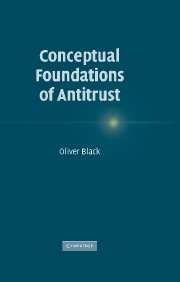3 - Per se rules and rules of reason
Published online by Cambridge University Press: 08 July 2009
Summary
Overview
Antitrust opposes restrictions on competition, but would be unworkable if it prohibited every such restriction. Principles are therefore needed to determine the categories of restriction that should be prohibited. In the United States such principles are embodied in the doctrine of per se rules and rules of reason. There is a long-standing debate whether Article 81(1) EC does, or should, be subject to a rule of reason of the kind used by the US courts in applying section 1 of the Sherman Act 1890. In US antitrust itself there is an even older debate as to the appropriate scope of rules of reason and per se rules in the application of section 1. One reason why these debates are unresolved is that the parties lack a shared understanding of the nature of, and relations between, per se rules and rules of reason. The modest purpose of this chapter is to clarify the concepts of the two kinds of rule and to identify, at a fairly abstract level, the relations between them. I shall not be offering substantive proposals as to the kinds of conduct suitable for treatment under one or other type of rule.
People often talk of ‘the’ rule of reason, which implies that there is only one; but the next section of the chapter identifies three main classes of rule of reason. First there is a rule for interpreting section 1 as applying only to unreasonable restraints.
- Type
- Chapter
- Information
- Conceptual Foundations of Antitrust , pp. 62 - 93Publisher: Cambridge University PressPrint publication year: 2005
- 1
- Cited by



